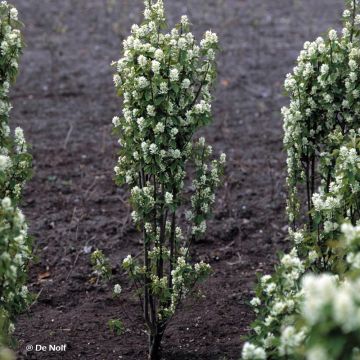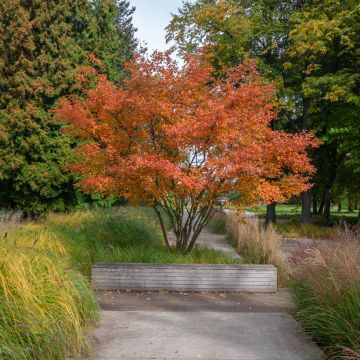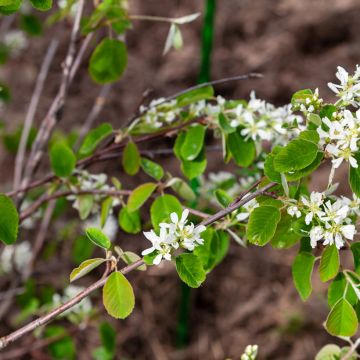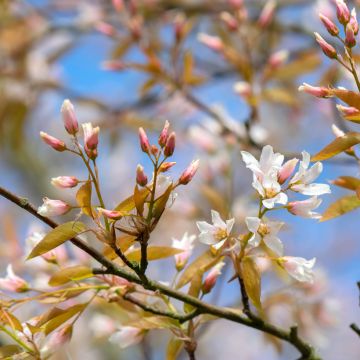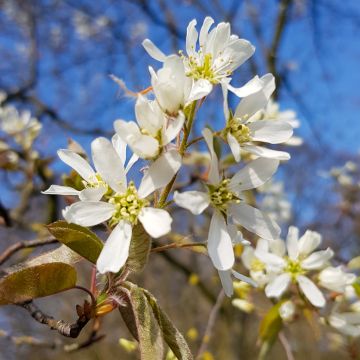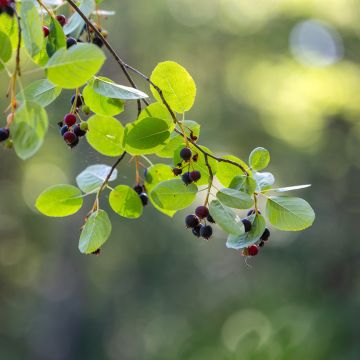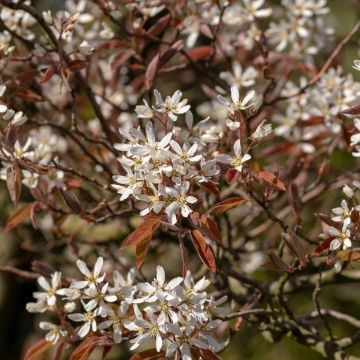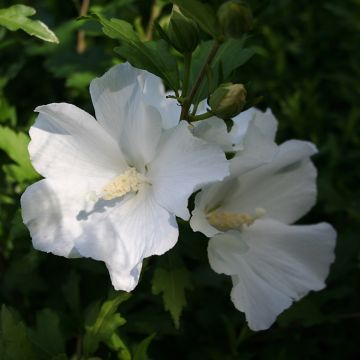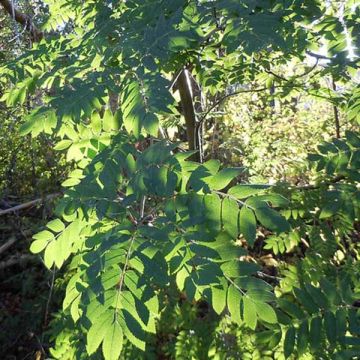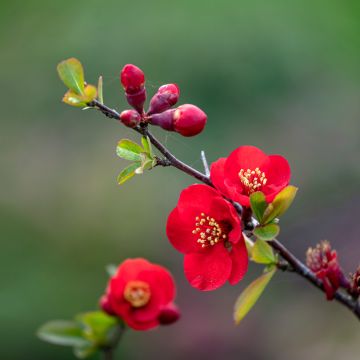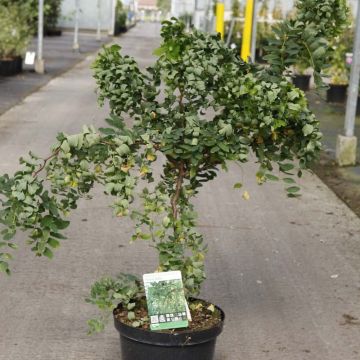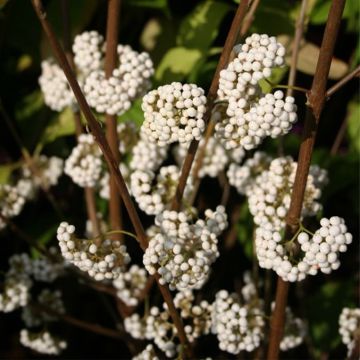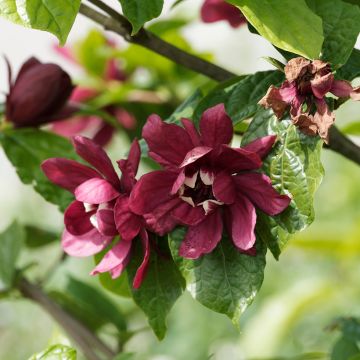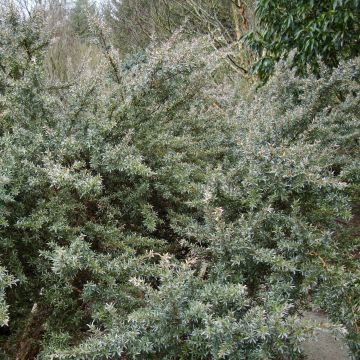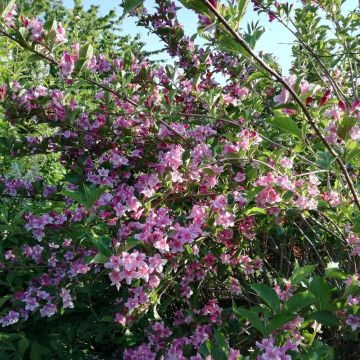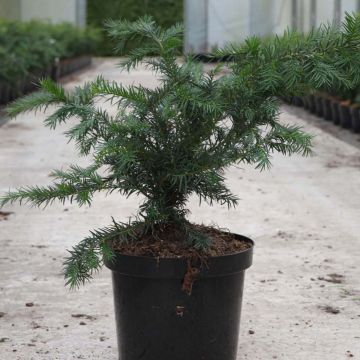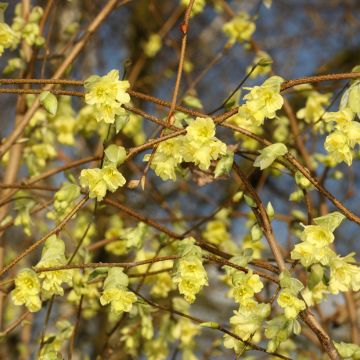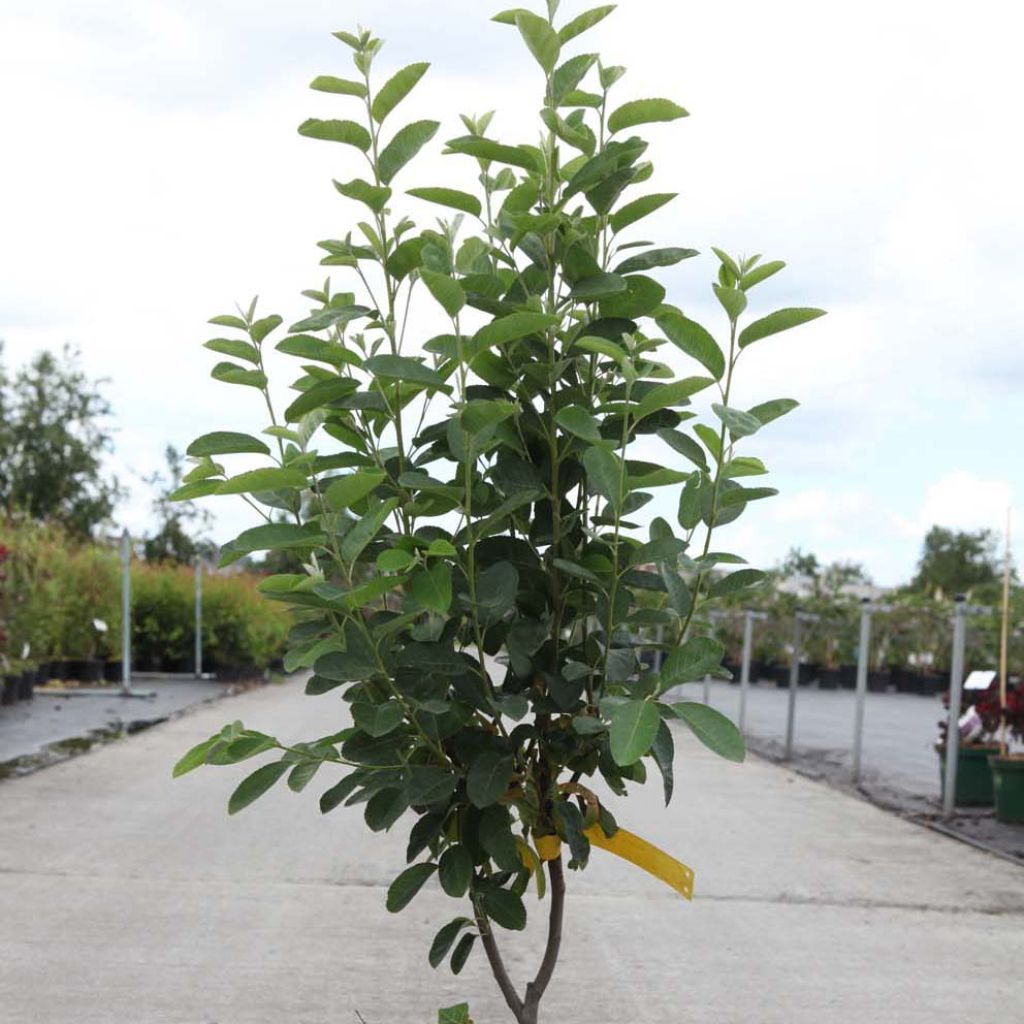

Amelanchier canadensis Rainbow Pillar
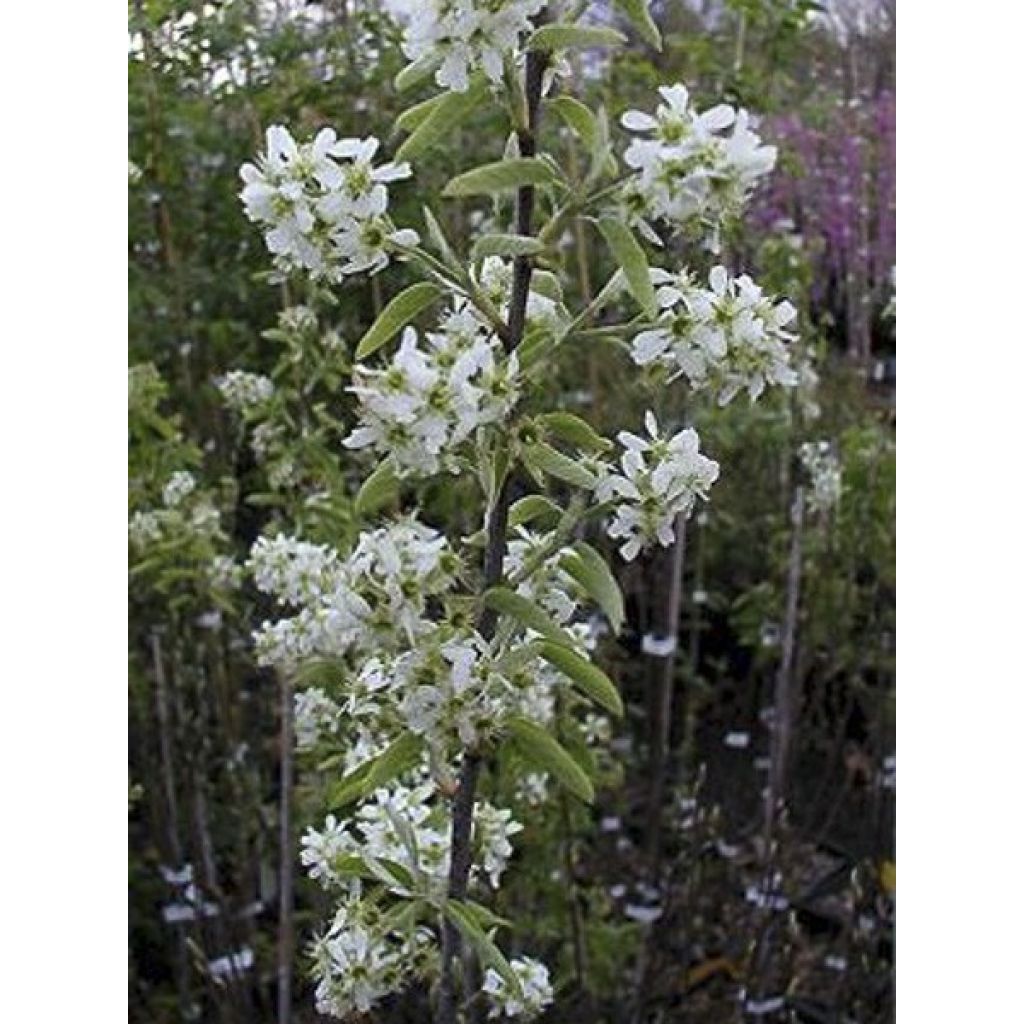

Amelanchier canadensis Rainbow Pillar
Amelanchier canadensis Rainbow Pillar
Amelanchier canadensis Rainbow Pillar® ('Glenn Form')
Serviceberry
This item cannot be shipped to the selected country
Oversize package delivery charge from €6.90
More information
Schedule delivery date,
and select date in basket
This plant carries a 24 months recovery warranty
More information
We guarantee the quality of our plants for a full growing cycle, and will replace at our expense any plant that fails to recover under normal climatic and planting conditions.
Oversize package: home delivery by special carrier from €6.90 per order..
Express home delivery from €8.90.

Does this plant fit my garden?
Set up your Plantfit profile →
Description
Amelanchier canadensis 'Rainbow Pillar' (synonym 'Glenn Form') is a variety of Canadian serviceberry that is interesting for its fastigiate and narrow habit, perfectly suited for small spaces. Its autumn colours are as beautiful as any among the species, in various shades of yellow, orange, flamboyant red, and purple. This variety is particularly floriferous in early spring: its clusters of white. honey-scented flowers give way to red fruits that turn black when ripe, appreciated by birds and edible for us. The Canadian serviceberry is an extremely cold-resistant shrub that tolerates a wide range of soils as long as they remain moist. True to its reputation, 'Rainbow Pillar' is an excellent hedge shrub, suitable for hedgerows or countryside planting.
Native to Canada and eastern North America, Amelanchier canadensis is a robust shrub in the large Rosaceae family, spared by most parasites and resistant to extreme cold. The cultivar 'Rainbow Pillar' closely resembles it, but exhibits a curiously fastigiate habit with its upright branches. With rapid growth, the shrub reaches a height of about 4m (13 ft) with a spread of 1.50m (5 ft) at maturity. The leaves are deciduous, leathery, elliptical, finely dentate along the edges, fuzzy, and 3 to 7cm (2.8 in) long. The foliage is medium green with a lighter underside, when young it is downy and tinted copper at budburst, while in autumn it is beautifully multicoloured. Flowering is abundant in April-May, on branches that will be bare or already adorned with young leaves depending on the climate. Flowering and fruiting are quick in this serviceberry: plants as small as 30 or 40cm (12 - 16 in) tall are already capable of reproducing. Encased in a pink calyx, the pretty white flowers with 5 long petals and yellow stamens are gathered in clusters along the branches. They are followed by edible fruits the size of a small pea, globular, called pomes, initially bright red and turning black when ripe. Slightly sweet in taste, they are perfect for making jam.
With its narrow habit, the 'Rainbow Pillar' serviceberry is able to fit into any garden, even the smallest ones. As sturdy as it is charming, this serviceberry grows in any good garden soil that is sufficiently deep and moist, in sunny or partially shaded sites. It can be used as a specimen plant or in the background of perennial beds. It works wonders in hedges and countryside plantings, alongside Cotinus, deciduous euonymus, Indigofera gerardiana, Japanese or spring-blooming spiraeas, viburnums, Neilia affinis, medlar, prunus, and many others.
Report an error about the product description
Amelanchier canadensis Rainbow Pillar in pictures
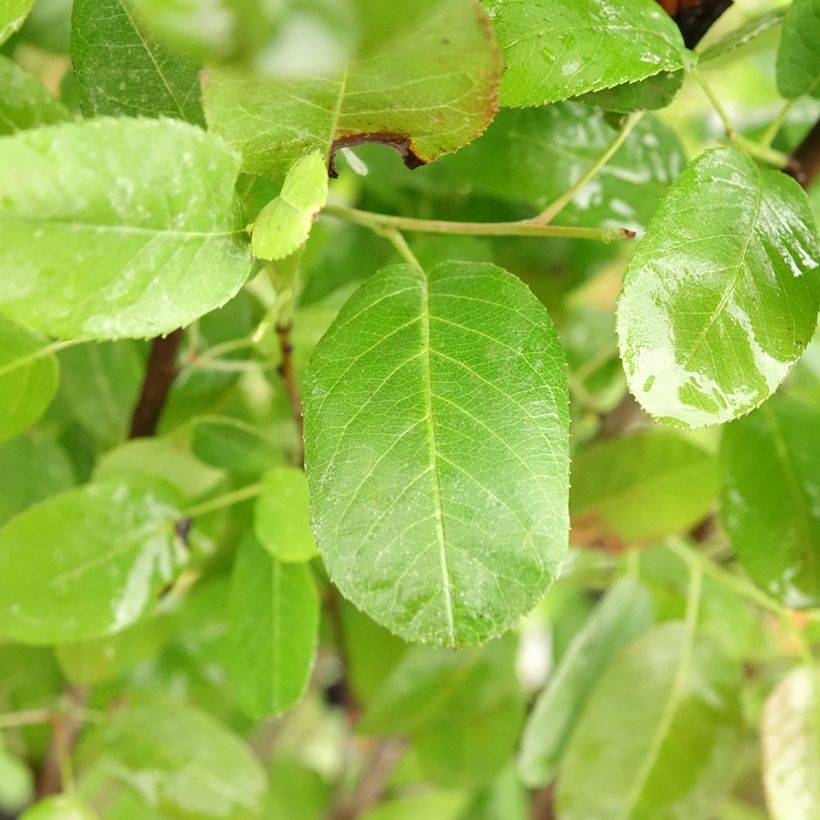

Plant habit
Flowering
Foliage
Botanical data
Amelanchier
canadensis
Rainbow Pillar® ('Glenn Form')
Rosaceae
Serviceberry
Cultivar or hybrid
Other Saskatoon - Juneberry
Planting and care
The Canadian Amelanchier is planted in spring or autumn in any good, well-drained garden soil, moist to damp, deep, in a sunny or semi-shaded position. Water and mulch to keep the soil cool and moist. This bush is not resistant to heat and drought. Prune in February by removing suckers and old stems to aerate and balance the branches. To propagate, you can separate the numerous suckers between late November and early March. Beware of powdery mildew! Spray with a sulphur fungicidal if the spring is mild and humid.
Planting period
Intended location
Care
-
, onOrder confirmed
Reply from on Promesse de fleurs
Hedge shrubs
Haven't found what you were looking for?
Hardiness is the lowest winter temperature a plant can endure without suffering serious damage or even dying. However, hardiness is affected by location (a sheltered area, such as a patio), protection (winter cover) and soil type (hardiness is improved by well-drained soil).

Photo Sharing Terms & Conditions
In order to encourage gardeners to interact and share their experiences, Promesse de fleurs offers various media enabling content to be uploaded onto its Site - in particular via the ‘Photo sharing’ module.
The User agrees to refrain from:
- Posting any content that is illegal, prejudicial, insulting, racist, inciteful to hatred, revisionist, contrary to public decency, that infringes on privacy or on the privacy rights of third parties, in particular the publicity rights of persons and goods, intellectual property rights, or the right to privacy.
- Submitting content on behalf of a third party;
- Impersonate the identity of a third party and/or publish any personal information about a third party;
In general, the User undertakes to refrain from any unethical behaviour.
All Content (in particular text, comments, files, images, photos, videos, creative works, etc.), which may be subject to property or intellectual property rights, image or other private rights, shall remain the property of the User, subject to the limited rights granted by the terms of the licence granted by Promesse de fleurs as stated below. Users are at liberty to publish or not to publish such Content on the Site, notably via the ‘Photo Sharing’ facility, and accept that this Content shall be made public and freely accessible, notably on the Internet.
Users further acknowledge, undertake to have ,and guarantee that they hold all necessary rights and permissions to publish such material on the Site, in particular with regard to the legislation in force pertaining to any privacy, property, intellectual property, image, or contractual rights, or rights of any other nature. By publishing such Content on the Site, Users acknowledge accepting full liability as publishers of the Content within the meaning of the law, and grant Promesse de fleurs, free of charge, an inclusive, worldwide licence for the said Content for the entire duration of its publication, including all reproduction, representation, up/downloading, displaying, performing, transmission, and storage rights.
Users also grant permission for their name to be linked to the Content and accept that this link may not always be made available.
By engaging in posting material, Users consent to their Content becoming automatically accessible on the Internet, in particular on other sites and/or blogs and/or web pages of the Promesse de fleurs site, including in particular social pages and the Promesse de fleurs catalogue.
Users may secure the removal of entrusted content free of charge by issuing a simple request via our contact form.
The flowering period indicated on our website applies to countries and regions located in USDA zone 8 (France, the United Kingdom, Ireland, the Netherlands, etc.)
It will vary according to where you live:
- In zones 9 to 10 (Italy, Spain, Greece, etc.), flowering will occur about 2 to 4 weeks earlier.
- In zones 6 to 7 (Germany, Poland, Slovenia, and lower mountainous regions), flowering will be delayed by 2 to 3 weeks.
- In zone 5 (Central Europe, Scandinavia), blooming will be delayed by 3 to 5 weeks.
In temperate climates, pruning of spring-flowering shrubs (forsythia, spireas, etc.) should be done just after flowering.
Pruning of summer-flowering shrubs (Indian Lilac, Perovskia, etc.) can be done in winter or spring.
In cold regions as well as with frost-sensitive plants, avoid pruning too early when severe frosts may still occur.
The planting period indicated on our website applies to countries and regions located in USDA zone 8 (France, United Kingdom, Ireland, Netherlands).
It will vary according to where you live:
- In Mediterranean zones (Marseille, Madrid, Milan, etc.), autumn and winter are the best planting periods.
- In continental zones (Strasbourg, Munich, Vienna, etc.), delay planting by 2 to 3 weeks in spring and bring it forward by 2 to 4 weeks in autumn.
- In mountainous regions (the Alps, Pyrenees, Carpathians, etc.), it is best to plant in late spring (May-June) or late summer (August-September).
The harvesting period indicated on our website applies to countries and regions in USDA zone 8 (France, England, Ireland, the Netherlands).
In colder areas (Scandinavia, Poland, Austria...) fruit and vegetable harvests are likely to be delayed by 3-4 weeks.
In warmer areas (Italy, Spain, Greece, etc.), harvesting will probably take place earlier, depending on weather conditions.
The sowing periods indicated on our website apply to countries and regions within USDA Zone 8 (France, UK, Ireland, Netherlands).
In colder areas (Scandinavia, Poland, Austria...), delay any outdoor sowing by 3-4 weeks, or sow under glass.
In warmer climes (Italy, Spain, Greece, etc.), bring outdoor sowing forward by a few weeks.

































